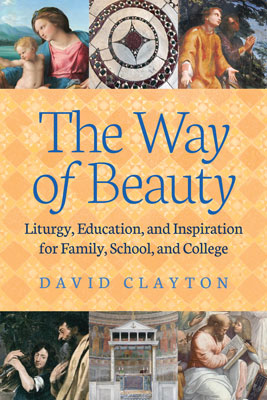Divine Wisdom, Maximilian Kolbe, Thomas More College of Liberal Arts and Mundelein Seminary's Chapel for the New Evangelization
 Love of God in the Sacred Liturgy - this is the source of Divine Wisdom and the goal of a good education...for lay people and seminarians alike.
Today, 14th August, is the commemoration of St Maximilian Kolbe. When I read through the account of his life given in Universalis most of it surprised me. I was aware of his heroic martyrdom in Auschwitz. What I hadn't realized was the extent of his achievements prior to this. Here was a Franciscan friar who was tirelessly following his mission of evangelization in Europe and in Japan; he founded a sodality that attracted great many devotees to Our Lady and even a community which became a 'Marian city' that attracted many lay people and published books and journals that were read widely. Here is man who not only found his 'vocation' (in the tradition sense of the word) so that he became a religious in the Franciscan order; but also in the broader sense in that he found his personal vocation. Clearly he had a special charism. He found out what it was and he understood how to direct it so that all these initiatives grew up around him.
Love of God in the Sacred Liturgy - this is the source of Divine Wisdom and the goal of a good education...for lay people and seminarians alike.
Today, 14th August, is the commemoration of St Maximilian Kolbe. When I read through the account of his life given in Universalis most of it surprised me. I was aware of his heroic martyrdom in Auschwitz. What I hadn't realized was the extent of his achievements prior to this. Here was a Franciscan friar who was tirelessly following his mission of evangelization in Europe and in Japan; he founded a sodality that attracted great many devotees to Our Lady and even a community which became a 'Marian city' that attracted many lay people and published books and journals that were read widely. Here is man who not only found his 'vocation' (in the tradition sense of the word) so that he became a religious in the Franciscan order; but also in the broader sense in that he found his personal vocation. Clearly he had a special charism. He found out what it was and he understood how to direct it so that all these initiatives grew up around him.
And here is the amazing fact. Every single one of us has a personal vocation by which we flourish and complete the work of God. Sometimes the effects will be visible, as with St Maximilian, and sometimes veiled and perhaps only visible in time. But always the effect is a dramatic in the divine economy and is as profound as that which allowed St Maximilian to volunteer himself for execution in order to save the life of a fellow prisoner. This is the Christian life: centered on the love of God in the Sacred Liturgy by which we are transfigured so that we can love man so profoundly, and in accordance with our own calling, create a culture of beauty around us.
A true Christian education is a formation that directs us to this supernatural end so that all we do in this life is done in accord with the divine will. The book, the Way of Beauty, recently published by Angelico Press, describes this formation and this is taught at Thomas More College of Liberal arts as part of the curriculum, where I am a Fellow. The book, the Little Oratory - a Beginner's Guide to Praying in the Home, describes a pattern of worship and prayer by which this is possible if we participate freely in it.
St Maximilian Kolbe understood that the power and the insight that we are given goes beyond what is otherwise humanly possible. It is divine. We become 'vice-gerents' - earthly representatives of God (I had to look up the meaning for this article in case your wondering - one aspect of wisdom which was not conveyed supernaturally to me!). Here is an excerpt from today's Office of Readings in which he describes it:

Incidentally, the image shown is one of the beautiful stained glass windows from the recently completed John Paul II chapel at the Mundelein Seminary in Chicago (an educational institution!). The chapel is the inspiration of the rector of the seminary, Fr Robert Barron (perhaps already 'former rector', he was recently named as auxiliary bishop for Los Angeles archdiocese). The page from the blog of the company that made the window (as part of a whole series in the chapel) explains that Fr. Barron envisioned the chapel to 'serve as an inspiration to generations of seminarians and a physical embodiment of the New Evangelization'.
Fr Barron and the architectural historian and sacred art expert Denis McNamara (who teaches at the Liturgical Institute at Mundelein) ensured that the symbolism of the imagery was in full accord with Christian tradition and fully liturgical. If these fulfill their function they they will engender in the worship of those seminarians undergoing their priestly education a deeper participation in the sacred liturgy that will lead them to that supernatural transformation in Christ; so forming them as agents of the New Evangelization who are, in turn, capable of transfiguring the whole culture. One hopes that this focus on the centrality of the sacred liturgy in the life of man will continue at the seminary for years to come even with the departure of Fr Barron.
There are strong connections to the saint in this northern suburb of Chicago. The Franciscan friars of Marytown church which is next to the seminary are custodians to the US national shrine to St Maximilian!


